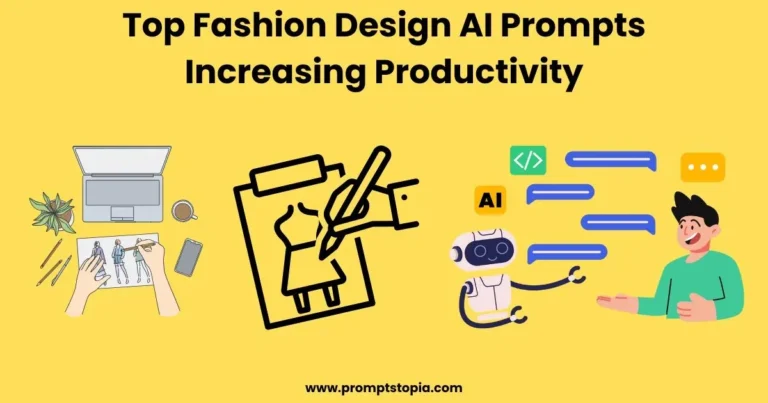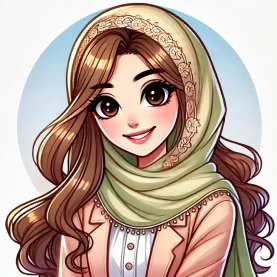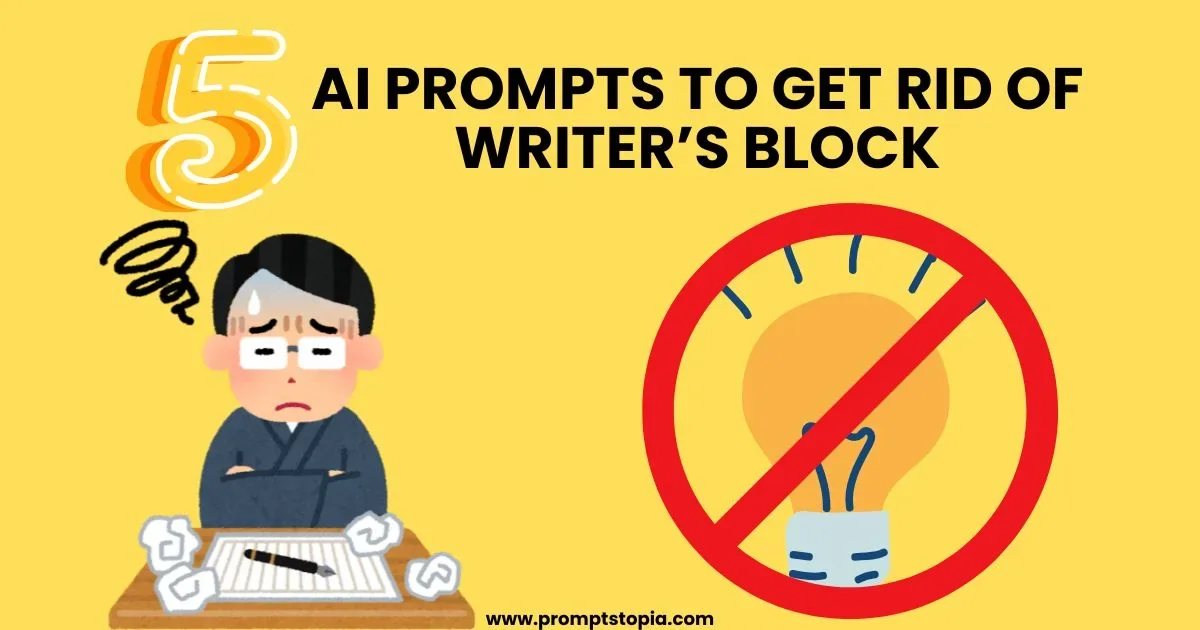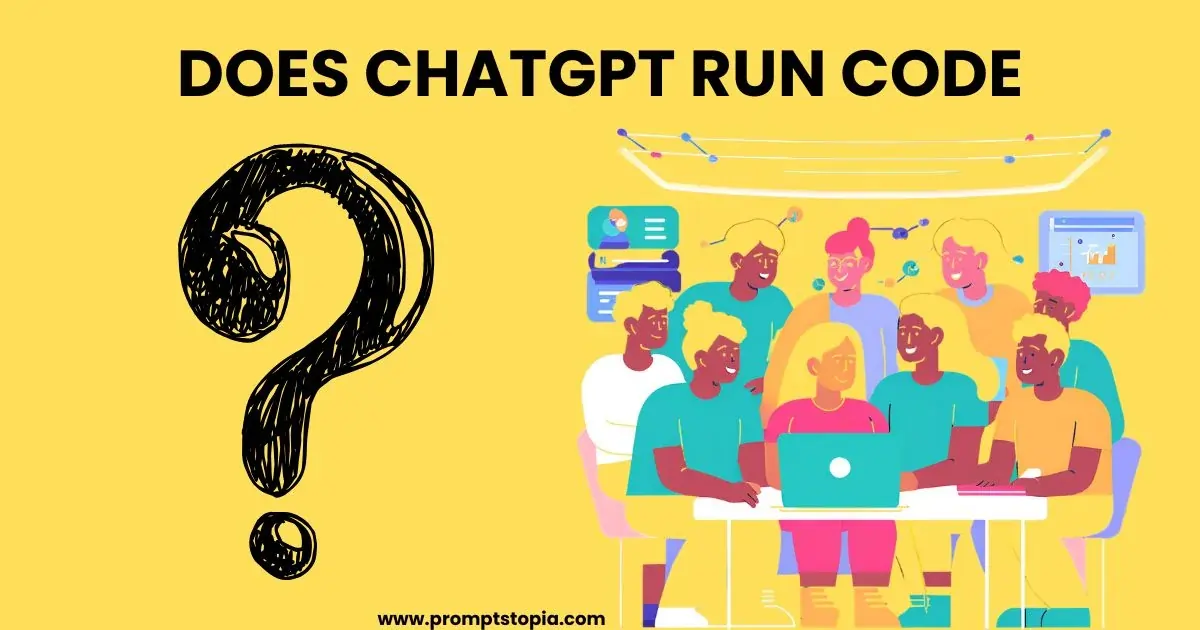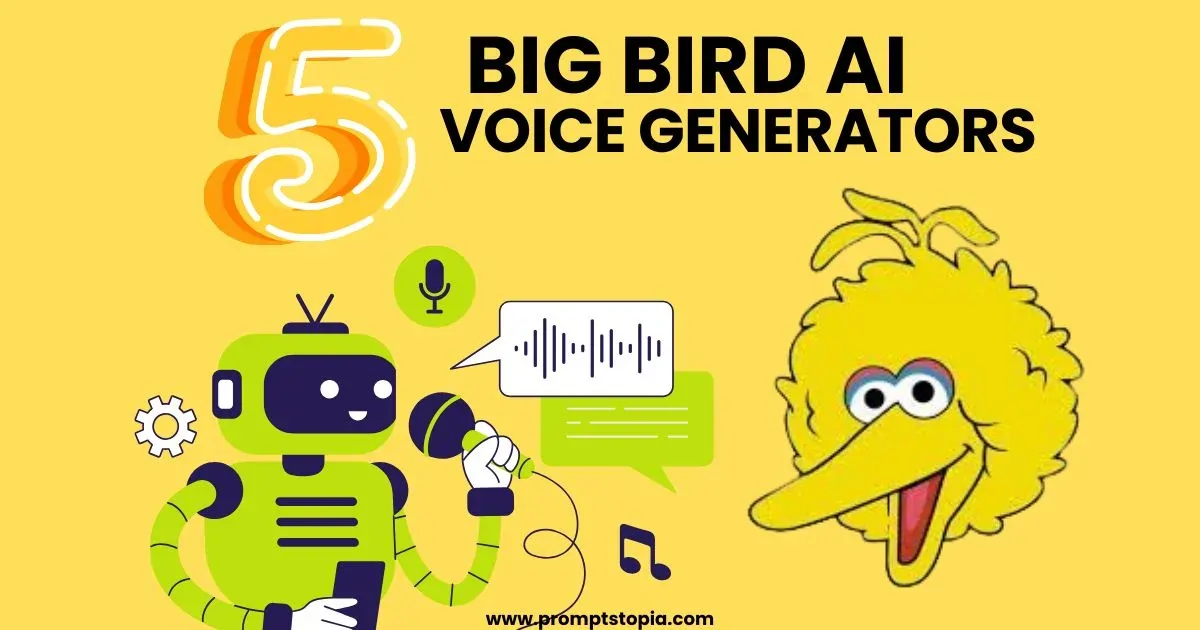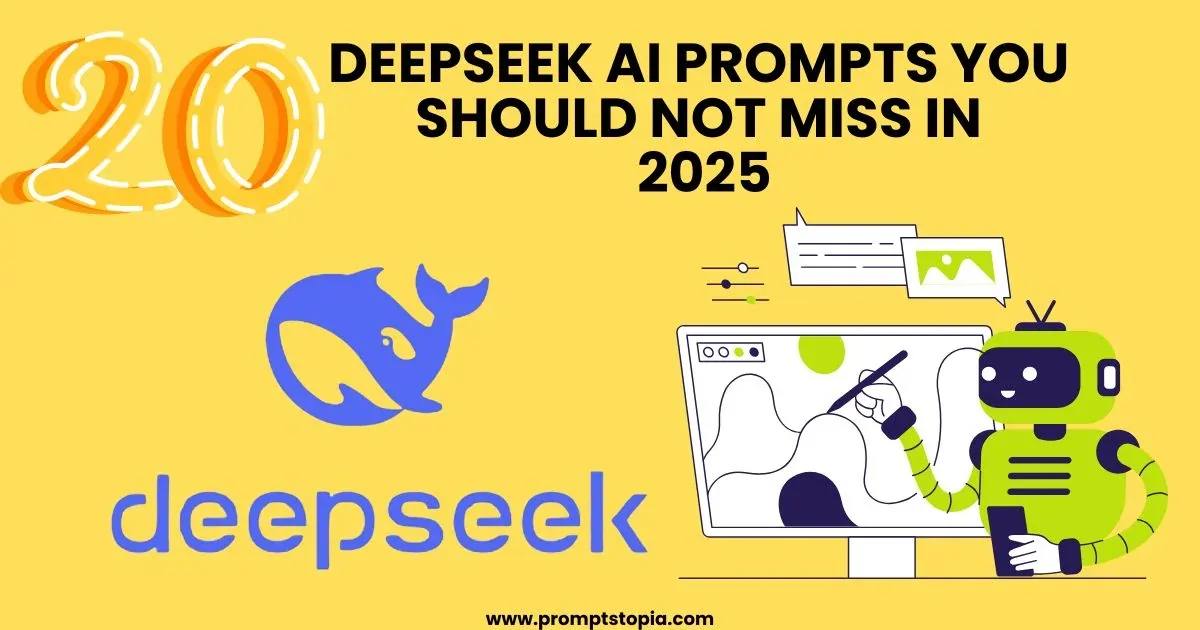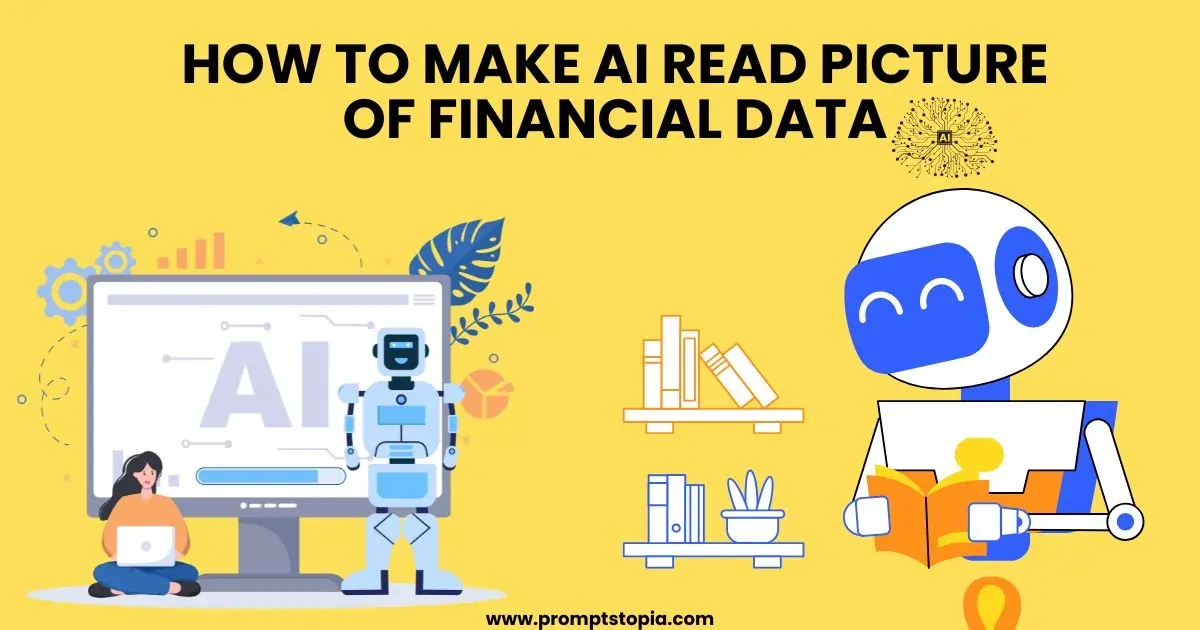Fashion design has always been a very exciting mixture of creativity and innovation. Today, technology is stepping up those boundaries even higher. All the way from rendering digital fabrics to virtual fashion shows, developments are changing the face of design. Among the most revolutionary tools available today are fashion design AI prompts. These prompts help designers in developing new concepts, introducing unique styles, and increasing their creative production at an extraordinary fast pace.
I remember the first time that I found out AI can be a powerful tool in fashion design. I was working on a project, and I needed new ideas in a hurry. And that’s where I found fashion design AI prompts and how it suggests patterns, ideas that I hadn’t even thought of at all. Similar to ChatGPT prompts for influencer marketing, these prompts open up potential and expand what’s possible.
Technology is not just helping the fashion designers but, in fact, allows them to create those creative boundaries.
AI’s Place in Modern Fashion Design
AI has become a very important tool in the fashion industry, changing the way designers approach their craft. From automating repetitive tasks to sparking creativity through fashion design AI prompts, AI is a true game-changer. Today, designers use AI to analyze trends, make virtual sketches, and predict which styles are likely to be popular in the coming seasons.
It ranges from the well-known: Stella McCartney and Tommy Hilfiger are using artificial intelligence to help them streamline their designs and make sustainable choices. In this manner, these innovators also show that with the right technology, something fresh can be created. But again, there are errors. For example, though AI is assumed to replace the human designer, it is not really that; it’s more like a working partner.
Why Use AI Prompts in Fashion Design?
There are several benefits that designers can derive using fashion design AI prompts. First, they come with the benefit of infusing creativity into designs because they bring fresh ideas one might not think of through traditional brainstorming. Through these prompts, one would be inspired to come up with unique designs that put them at a different league in the market.
Instead of taking hours, it is possible for designers to output a number of concepts as a result of AI prompts. This efficiency simply allows for more time to refine and perfect the final pieces. The difference is quite glaring between AI prompts and traditional brainstorming. Sometimes, traditional approaches can feel so confining and repetitive; the freedom in AI prompts opens the world.
Using Ai prompts in fashion designs has completely changed my creative process. I used to struggle with themes and style but now, I have got a good grip on prompts and I use prompts like “Design a vintage dress inspired by moon and natural patterns.” Using prompt engineering frameworks with various types of prompts that are descriptive, comparative, or exploratory has simplified my creative process in fashion design.
Types of Fashion Design AI Prompts
Fashion design AI prompts come in all shapes and sizes, all unique in their use cases and lines of inspiration. Three types can be identified below to bring some quality into your design process:
Trend-Based Prompts
These prompts utilize the current fashion trend for creating ideas that connect with today’s market. For example, if one of the trending color palettes is vibrant colors, an AI prompt may even suggest a collection altogether based on bold colors. This not only keeps your designs relevant but also catches the eye of trend-aware consumers.
Historical Inspiration Prompts
Drawing inspiration from the past can yield timeless designs. Historical prompts inspire designers to create styles belonging to era’s such as the elegant flapper of the 1920s or the dramatic silhouettes of the 1980s. Modernizing these classic elements in fresh collection garments does not necessarily mean inventing anything original but pays homage to history while appealing to tastes at the same time; for example, a prompt might send you off designing a modern gown with intricate lace details similar of Victorian-era fashion.
Material and Fabric Prompts
These prompts try designers to think outside the box in terms of fabric pairing. Unusual pairings, such as denim with silk or leather with knit, can inspire innovative design through AI. Imagine a collection featuring a jacket with denim on the body and silk sleeves. Such a combination provides structure in addition to fluidity. With a mix of materials, great contrasts will emerge from each appearance on the runway. These kinds of prompts will create entire collections that are both coherent and full of inspiration. Be it modern trends, the revival of historical styles, or even experimenting with material, AI prompts will become the guiding light for any fashion designer.
Top AI Tools for Fashion Designer
These top AI tools in the world of fashion designers revolutionize creativity and workflow by introducing innovative solutions in 3D garment visualization, trend predictions, and customized designs. This further makes productions smoother, enhances designs, and keeps one ahead of the fast-paced fashion industry pace.
Adobe Sensei
Adobe Sensei relies on AI to refine the way creatives work within the Adobe Creative Cloud. This tool allows automatic tagging of images, facial recognition, and style suggestions. It is best suited for designers who want to streamline their editing process without having to sacrifice quality. For example, Sensei can suggest color palettes based on what is currently trending, thus keeping collections fresh and appealing.
Designhill AI
Designhill AI enables one to make logos, social media posts, and even fashion designs. The website is user-friendly, easy to use, and rapidly iterates through various design options. Its capacity to generate designs based on prompts makes it the ideal website for creating one-of-a-kind pieces. The site allows designers to input their ideas and get back with multiple variations from which they can choose. It is time-saving and can give a boost to creativity.
StyleSnap
This tool uses machine learning to recognize clothing in photos and suggest similar items available for purchase. It’s particularly useful for designers looking to understand market trends and consumer preferences. By analyzing popular styles, designers can align their creations with what shoppers are currently interested in, enhancing their sales potential.
RunwayML
RunwayML is a creative AI machine learning-powered suite of applications created for designers to work around visuals and videos. Some of the strengths it possesses are robust video-making and graphic designing abilities and its ability to generate concepts to develop effects, which gives them strength in making their presentation enhanced. Some designs with an impressive result made through it are this beautiful visual ad campaign with a mixture between fashion and augmented reality blurring traditional marketing ways toward fashion.
Common Issues in Fashion Design AI Prompt
Being a strongly defined benefit package, fashion design AI prompts come with a variety of drawbacks:
- Over-Reliance
It limits creativity because one may solely rely on AI tools in designing, hence limiting their creativity. One is supposed to be able to balance between the use of AI prompts and trusting oneself as a designer. Remember that AI exists to enhance your ideas but not replace them.
- Prompt Limitations
At times, AI prompts may produce results that do not align with the vision of a designer. For example, I once received a prompt that suggested a totally mismatched color palette with the theme I was working on. To adjust this, I refined the prompt with more specific guidelines in order to highlight the mood and elements I wanted to explore.
- Personalization of Prompts
To make AI prompts more effective, personalization is the way to go. Instead of using generic prompts, fit them into your style, brand, or current inspirations. Use a prompt builder that can help you create custom prompts that work with your vision and goals, such that the outputs resonate.
Expert Prompts for Fashion Design AI
These expert prompts for fashion design AI provide customized creative inputs, unlocking unique design ideas and simplifying workflows for innovative fashion projects. The tool that, I will be using today as an example is RunwayML.
Modern Runway Look
Prompt:
“As a skilled and efficient fashion designer. Your job is to create a modern evening collection that draws ideas from architecture. Use structured silhouettes, metallic gray and blue tones, in innovative material combinations such as silk with neoprene. The collection will combine asymmetrical hemlines together with statement shoulder pieces; elegance and modern sophistication seem to be the perfect idea.”
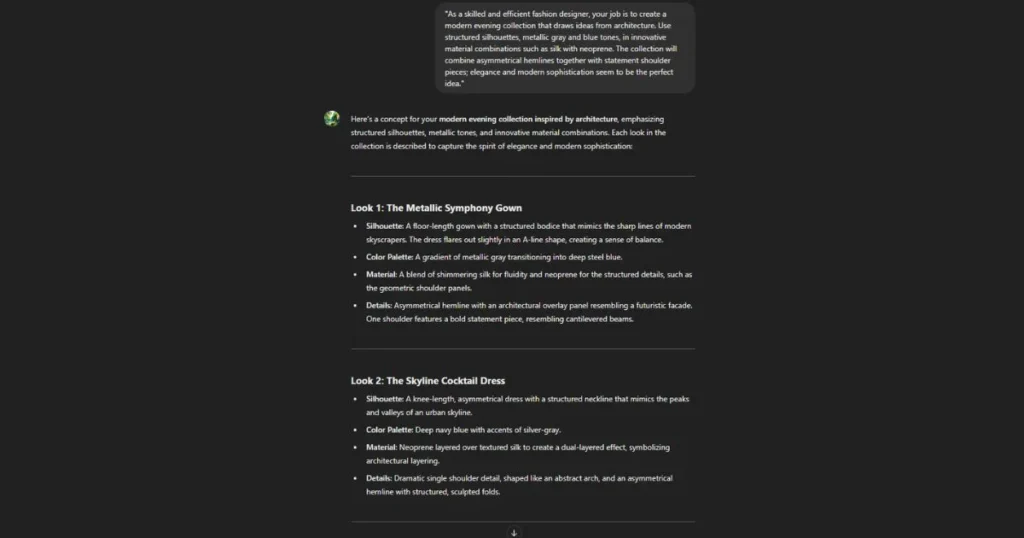
Sustainable Streetwear
Prompt:
“Your job as a skilled fashion designer is to create a brand of streetwear that reflects the idea of sustainable living. Find materials, such as recycled denim, organic cotton, and plant-based dyes. The details in patchwork will be there, along with loose, oversized silhouettes blending comfort and urban aesthetics. Colors should be earthy tones such as olive green, terracotta, and deep brown.”
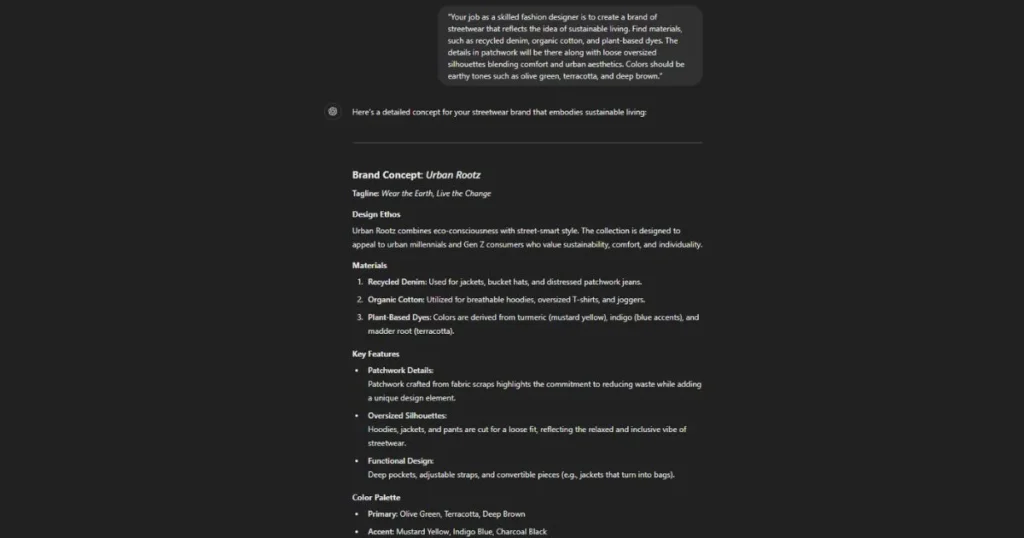
Historical Revival
Prompt:
“As a skilled fashion designer. Your task is to design a capsule collection that combines modern elements with Victorian fashion. Have lace details, high-neck designs, and fitted bodices. Mix modern organza with traditional velvet and satin. Try muted pastel colors and subtle floral prints to keep it very modern yet vintage.”
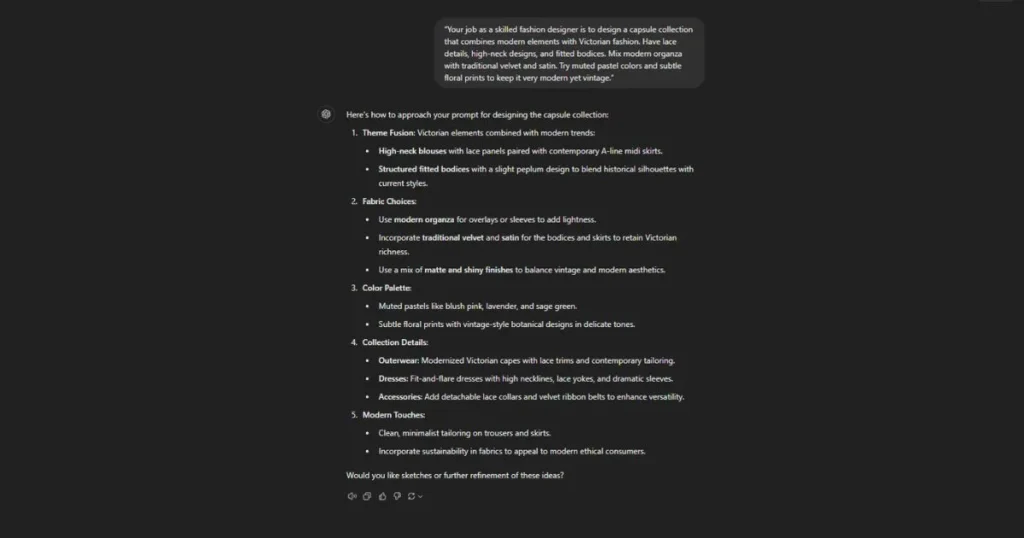
Tips for Utilizing Fashion Design AI Prompts
Do: Be specific when drafting your fashion design AI prompts. The more detail you add, the more specific the AI output will be. For example, being specific with “flowy, summer dresses with floral lace and pastel colors” will give you much more targeted results than saying “summer dresses.
Do: Experiment with different prompts and combinations. For example, mix trend-based prompts with historical ones to create unique fusion pieces.
DON’T’s: Depend only on AI. Of course, AI is a great tool; however, extreme dependence might make designs impersonalized. Always add your own touch and view in the process.
DON’T’s: Ignore the role of refinement. Sometimes an initial AI prompt is less than ideal. Revise and experiment to get closer to your design goals. Just as you might have to try a few ChatGPT sales prompts before getting the perfect marketing copy, try different approaches until you find the most effective one.
Personal Advice on Maintaining Creativity
AI is supposed to be a companion and an assistant for your creative expressions. Feel free to inspire yourself by AI-generated materials and combine them with personal ideas that make you shine. Follow your gut; do not hesitate to create something outside of what was generated if inspiration hits.
Fashion Design and its Future
The future of fashion design will be a combination of creativity from humans and innovative applications of AI. Advanced tools of AI will soon bring hyper-personalized designs and real-time analysis of trends. Designers can soon work with AI on ideas, prototyping, and material simulations.
Future Advances in AI Technology
This should result in improved performance in interpreting subtle and clever prompts and incorporating new design elements. With AI integrated with VR , fashion show and preview may be created without a need to have physical prototypes. For those entering into the world of fashion, AI is a powerful learning accelerator and creative enhancer. But there has to be a balance maintained here. Though fashion design AI prompts give one a base, it’s only your own ideas and visions that will make one unique. Tools like AI exist to help you perfect your skills, not to take their place. Let’s use this technology, but never forget the value of human touch in fashion design.
Final Words
Experimenting with fashion design AI prompts can open new doors of creativity and efficiency. Remember, AI is a powerful tool to inspire and enhance your designs, not to replace your unique touch. Keep experimenting, refining, and trusting your instincts. Balance AI’s suggestions with your personal style to create pieces that are truly your own. In my experience, blending AI insights with human creativity leads to the most innovative outcomes. Let AI be a creative business partner, but guide the creative work and the final masterpiece.
FAQ’s
Similar to humans, AI uses social media scraping, runway look review, search data analysis, and image generation to forecast trends.
These can include, among other things, privacy challenges, legal issues, job displacement worries, and security concerns.
By automating routine tasks, AI in graphic design would generally greatly streamline workflows, increasing designer productivity and leading to quicker and more effective project completion.

